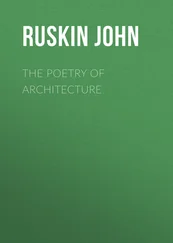John Ruskin - The Stones of Venice (Vol. 1-3)
Здесь есть возможность читать онлайн «John Ruskin - The Stones of Venice (Vol. 1-3)» — ознакомительный отрывок электронной книги совершенно бесплатно, а после прочтения отрывка купить полную версию. В некоторых случаях можно слушать аудио, скачать через торрент в формате fb2 и присутствует краткое содержание. Жанр: unrecognised, на английском языке. Описание произведения, (предисловие) а так же отзывы посетителей доступны на портале библиотеки ЛибКат.
- Название:The Stones of Venice (Vol. 1-3)
- Автор:
- Жанр:
- Год:неизвестен
- ISBN:нет данных
- Рейтинг книги:4 / 5. Голосов: 1
-
Избранное:Добавить в избранное
- Отзывы:
-
Ваша оценка:
- 80
- 1
- 2
- 3
- 4
- 5
The Stones of Venice (Vol. 1-3): краткое содержание, описание и аннотация
Предлагаем к чтению аннотацию, описание, краткое содержание или предисловие (зависит от того, что написал сам автор книги «The Stones of Venice (Vol. 1-3)»). Если вы не нашли необходимую информацию о книге — напишите в комментариях, мы постараемся отыскать её.
The Stones of Venice (Vol. 1-3) — читать онлайн ознакомительный отрывок
Ниже представлен текст книги, разбитый по страницам. Система сохранения места последней прочитанной страницы, позволяет с удобством читать онлайн бесплатно книгу «The Stones of Venice (Vol. 1-3)», без необходимости каждый раз заново искать на чём Вы остановились. Поставьте закладку, и сможете в любой момент перейти на страницу, на которой закончили чтение.
Интервал:
Закладка:
1 Appendix 1, “Foundation of Venice.”
2Appendix 2, “Power of the Doges.”
3Sismondi, Hist. des Rép. Ital., vol. i. ch. v.
4Appendix 3, “Serrar del Consiglio.”
5“Ha saputo trovar modo che non uno, non pochi, non molti, signoreggiano, ma molti buoni, pochi migliori, e insiememente, un ottimo solo .” ( Sansovino. ) Ah, well done, Venice! Wisdom this, indeed.
6Daru, liv. xii. ch. xii.
7Daru, liv. xvi. cap. xx. We owe to this historian the discovery of the statutes of the tribunal and date of its establishment.
8Ominously signified by their humiliation to the Papal power (as before to the Turkish) in 1509, and their abandonment of their right of appointing the clergy of their territories.
9The senate voted the abdication of their authority by a majority of 512 to 14. (Alison, ch. xxiii.)
10By directing the arms of the Crusaders against a Christian prince. (Daru, liv. iv. ch. iv. viii.)
11Appendix 4, “San Pietro di Castello.”
12Tomaso Mocenigo, above named, § V.
13
“In that temple porch,
(The brass is gone, the porphyry remains,)
Did Barbarossa fling his mantle off,
And kneeling, on his neck receive the foot
Of the proud Pontiff—thus at last consoled
For flight, disguise, and many an aguish shake
On his stone pillow.”
I need hardly say whence the lines are taken: Rogers’ “Italy” has, I believe, now a place in the best beloved compartment of all libraries, and will never be removed from it. There is more true expression of the spirit of Venice in the passages devoted to her in that poem, than in all else that has been written of her.
14At least, such success as they had. Vide Appendix 5, “The Papal Power in Venice.”
15The inconsiderable fortifications of the arsenal are no exception to this statement, as far as it regards the city itself. They are little more than a semblance of precaution against the attack of a foreign enemy.
16Mémoires de Commynes, liv. vii. ch. xviii.
17Appendix 6, “Renaissance Ornaments.”
18Appendix 7, “Varieties of the Orders.”
19The reader will find the weak points of Byzantine architecture shrewdly seized, and exquisitely sketched, in the opening chapter of the most delightful book of travels I ever opened—Curzon’s “Monasteries of the Levant.”
20Appendix 8, “The Northern Energy.”
21Appendix 9, “Wooden Churches of the North.”
22Appendix 10, “Church of Alexandria.”
23Appendix 11, “Renaissance Landscape.”
24Selvatico, “Architettura di Venezia,” p. 147.
25Selvatico, p. 221.
26The older work is of Istrian stone also, but of different quality.
27Appendix 12, “Romanist Modern Art.”
CHAPTER II.
THE VIRTUES OF ARCHITECTURE.
Table of Contents
§ I. We address ourselves, then, first to the task of determining some law of right which we may apply to the architecture of all the world and of all time; and by help of which, and judgment according to which, we may easily pronounce whether a building is good or noble, as, by applying a plumb-line, whether it be perpendicular.
The first question will of course be: What are the possible Virtues of architecture?
In the main, we require from buildings, as from men, two kinds of goodness: first, the doing their practical duty well: then that they be graceful and pleasing in doing it; which last is itself another form of duty.
Then the practical duty divides itself into two branches—acting and talking:—acting, as to defend us from weather or violence; talking, as the duty of monuments or tombs, to record facts and express feelings; or of churches, temples, public edifices, treated as books of history, to tell such history clearly and forcibly.
We have thus, altogether, three great branches of architectural virtue, and we require of any building—
1. That it act well, and do the things it was intended to do in the best way.
2. That it speak well, and say the things it was intended to say in the best words.
3. That it look well, and please us by its presence, whatever it has to do or say. 28
§ II. Now, as regards the second of these virtues, it is evident that we can establish no general laws. First, because it is not a virtue required in all buildings; there are some which are only for covert or defence, and from which we ask no conversation. Secondly, because there are countless methods of expression, some conventional, some natural: each conventional mode has its own alphabet, which evidently can be no subject of general laws. Every natural mode is instinctively employed and instinctively understood, wherever there is true feeling; and this instinct is above law. The choice of conventional methods depends on circumstances out of calculation, and that of natural methods on sensations out of control; so that we can only say that the choice is right, when we feel that the means are effective; and we cannot always say that it is wrong when they are not so.
A building which recorded the Bible history by means of a series of sculptural pictures, would be perfectly useless to a person unacquainted with the Bible beforehand; on the other hand, the text of the Old and New Testaments might be written on its walls, and yet the building be a very inconvenient kind of book, not so useful as if it had been adorned with intelligible and vivid sculpture. So, again, the power of exciting emotion must vary or vanish, as the spectator becomes thoughtless or cold; and the building may be often blamed for what is the fault of its critic, or endowed with a charm which is of its spectator’s creation. It is not, therefore, possible to make expressional character any fair criterion of excellence in buildings, until we can fully place ourselves in the position of those to whom their expression was originally addressed, and until we are certain that we understand every symbol, and are capable of being touched by every association which its builders employed as letters of their language. I shall continually endeavor to put the reader into such sympathetic temper, when I ask for his judgment of a building; and in every work I may bring before him I shall point out, as far as I am able, whatever is peculiar in its expression; nay, I must even depend on such peculiarities for much of my best evidence respecting the character of the builders. But I cannot legalize the judgment for which I plead, nor insist upon it if it be refused. I can neither force the reader to feel this architectural rhetoric, nor compel him to confess that the rhetoric is powerful, if it have produced no impression on his own mind.
§ III. I leave, therefore, the expression of buildings for incidental notice only. But their other two virtues are proper subjects of law—their performance of their common and necessary work, and their conformity with universal and divine canons of loveliness: respecting these there can be no doubt, no ambiguity. I would have the reader discern them so quickly that, as he passes along a street, he may, by a glance of the eye, distinguish the noble from the ignoble work. He can do this, if he permit free play to his natural instincts; and all that I have to do for him is to remove from those instincts the artificial restraints which prevent their action, and to encourage them to an unaffected and unbiassed choice between right and wrong.
§ IV. We have, then, two qualities of buildings for subjects of separate inquiry: their action, and aspect, and the sources of virtue in both; that is to say, Strength and Beauty, both of these being less admired in themselves, than as testifying the intelligence or imagination of the builder.
For we have a worthier way of looking at human than at divine architecture: much of the value both of construction and decoration, in the edifices of men, depends upon our being led by the thing produced or adorned, to some contemplation of the powers of mind concerned in its creation or adornment. We are not so led by divine work, but are content to rest in the contemplation of the thing created. I wish the reader to note this especially: we take pleasure, or should take pleasure, in architectural construction altogether as the manifestation of an admirable human intelligence; it is not the strength, not the size, not the finish of the work which we are to venerate: rocks are always stronger, mountains always larger, all natural objects more finished; but it is the intelligence and resolution of man in overcoming physical difficulty which are to be the source of our pleasure and subject of our praise. And again, in decoration or beauty, it is less the actual loveliness of the thing produced, than the choice and invention concerned in the production, which are to delight us; the love and the thoughts of the workman more than his work: his work must always be imperfect, but his thoughts and affections may be true and deep.
Читать дальшеИнтервал:
Закладка:
Похожие книги на «The Stones of Venice (Vol. 1-3)»
Представляем Вашему вниманию похожие книги на «The Stones of Venice (Vol. 1-3)» списком для выбора. Мы отобрали схожую по названию и смыслу литературу в надежде предоставить читателям больше вариантов отыскать новые, интересные, ещё непрочитанные произведения.
Обсуждение, отзывы о книге «The Stones of Venice (Vol. 1-3)» и просто собственные мнения читателей. Оставьте ваши комментарии, напишите, что Вы думаете о произведении, его смысле или главных героях. Укажите что конкретно понравилось, а что нет, и почему Вы так считаете.












